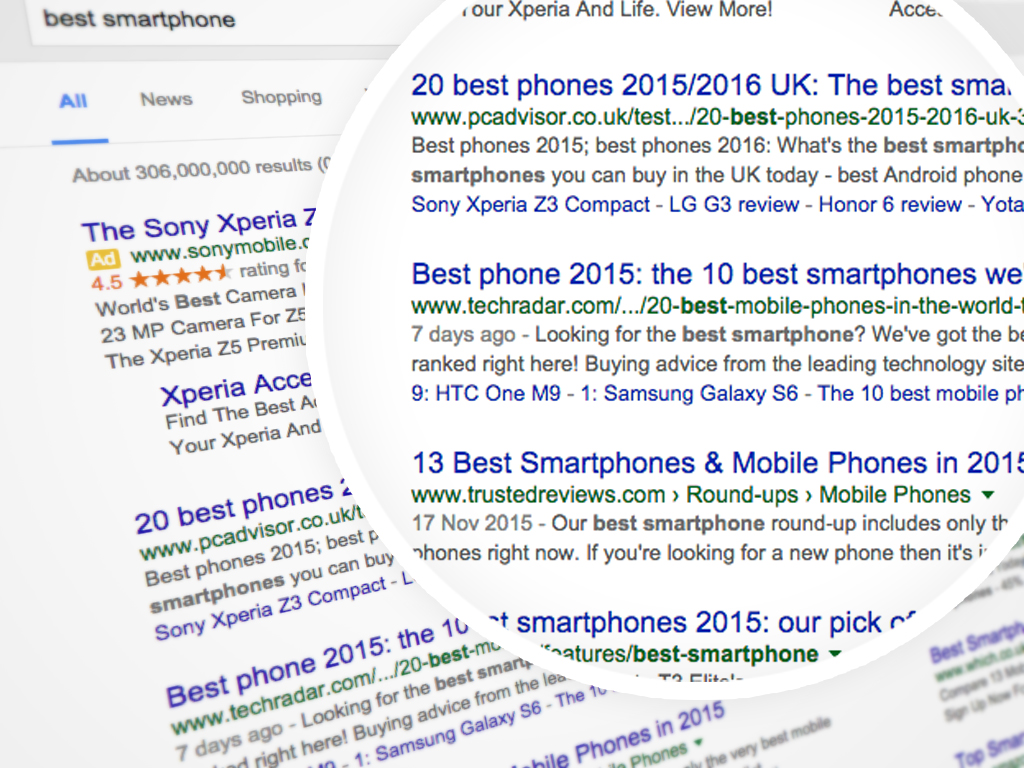How your website pages are structured technically makes a world of difference to how the search engines understand the content. Having content that delights your users keeps visitors on the page longer, impacts your KPIs, and builds your brand and your community.
Here are eight ways you can improve your page content and structure, starting now.
1. Read Google’s Search Quality Handbook
Google’s search quality handbook is the guide Google provide to its team of human raters who evaluate websites in the search results. It serves as a feedback loop for engineers who build algorithms that seek to yield the highest quality results. In November, Google publicly released their handbook, with updated guidelines for a mobile world and a heavy emphasis on user experience. The 160-page document is a treasure trove of priceless material that showcases how Google thinks about and rates quality – and how you should, too. So start honestly evaluating your content and pages are up to standards.
2. Clean Up Your Code
You want a page with clean code that’s easy to crawl and provides the information the search engine bot needs to understand and rank it. So, the code that makes up your pages can either hold your page back or help catapult it into the limelight. HTML5 is the latest markup language for structuring content, and is designed with mobile friendliness and the semantic web in mind (check out some of these new tags). If you aren’t ready for a new site in HTML5, there are things you can do to clean up the current code – specifically with page speed in mind (as that’s a signal in Google’s ranking algorithm). Especially in a mobile world, Google wants you to render your above-the-fold content in 1 second or less. To learn more about how to make your site faster, check out these tools to analyze your web pages.
3. Relevant, Responsive, Targeted Content
The star of the show, the content on your page, should be the best answer to your searcher’s query it can be. But your content strategy also needs to be driven by:
- Search and audience demand: What are the topics your audience is talking about right now?
- Responsiveness: Consider the needs of the mobile user when it comes to having responsive and dynamic content, and how it’s formatted for a mobile device.
- Engagement: More than just words on the page, content is how you will achieve your page’s goals through all assets available, from visual marketing to video to call-to-actions and just plain entertainment.
- Evergreen and top-performing pages: What percentage of your pages perform well historically? How can you make them even better? Make a plan to update those evergreen pages every so often to ensure they have the most recent and factual information.
- Brand and tone: Writing trends are changing for brands, and right now, companies have a lot of freedom to explore their personalities fully through fun and honest content.
- Related content: How will you keep visitors on your site longer? What else can you show them?
4. Rethink Your Ads
Google evaluates web pages against hundreds of signals, but there are some specific algorithms that you want to continue to understand as you try to improve page structure. Google’s page layout algorithm targets pages that have too many ads above the fold and force users to scroll down too far to get to the content they originally intended to click through to. This is a user experience issue, and along with the rise of ad blockers, sends a message to brands and publishers that it’s time to focus on the user or suffer the consequences.
5. Make Content Mobile-Friendly
For years, “going mobile” meant you were ahead of the game. Not anymore – now it’s essential for visibility and capturing the growing number of mobile users (about 63 percent will access the Internet from their phone by 2017). There are plenty of ways you can assess the mobile-friendliness of your site content, especially with free resources from Google like this one.
6. Do Some Serious Content Quality Assessment
The Panda algorithm is specifically aimed at chopping poor-quality web pages from the results, and has gone through multiple iterations over the years. We typically hear about it each time a new update is on the horizon, so it’s been important to stay proactive and make modifications as necessary – but when the Panda algorithm becomes part of the core ranking algorithm, it will be harder to identify if and when your site has been hit. Refer back to the first section on this list for a better idea of how Google thinks about quality content.
7. Top-To-Bottom Content Optimization
Simple best practices for on-page optimization still help the search engines understand what your page is about. This means ensuring your meta information is correctly implemented on the page in the head section, and that each page contains title and description tags that sum up what the page is about. Unique meta information ensures there isn’t any perceived duplicate content by the search engine, and depending on how enticing it is, can increase click throughs from the search results (especially important in an era of click-bait headlines a la BuzzFeed). Schema markup will continue to be something to explore on your pages to give more context to the search engines as to what the content is about.
8. Make Your Pages More Secure
While HTTPS is more of a site-wide consideration, it impacts your site at the page level. Google announced HTTPS as a lightweight ranking signal in 2014 with the potential to have more weight in the future. Consider HTTPS not only as a ranking signal, but part of the user experience – as it will make buyers in an ecommerce environment feel more secure. Here’s how to get started if you aren’t already there.



